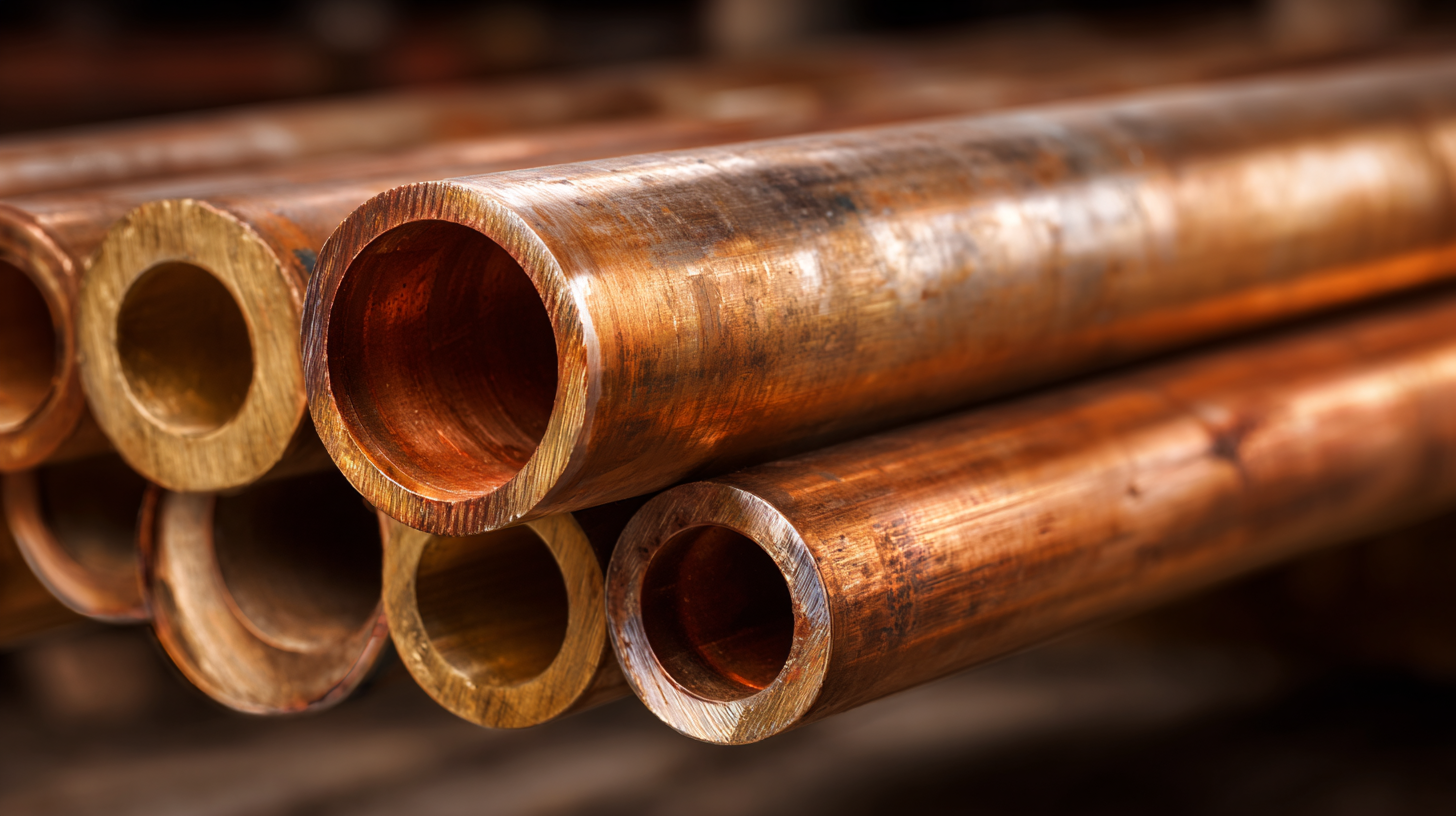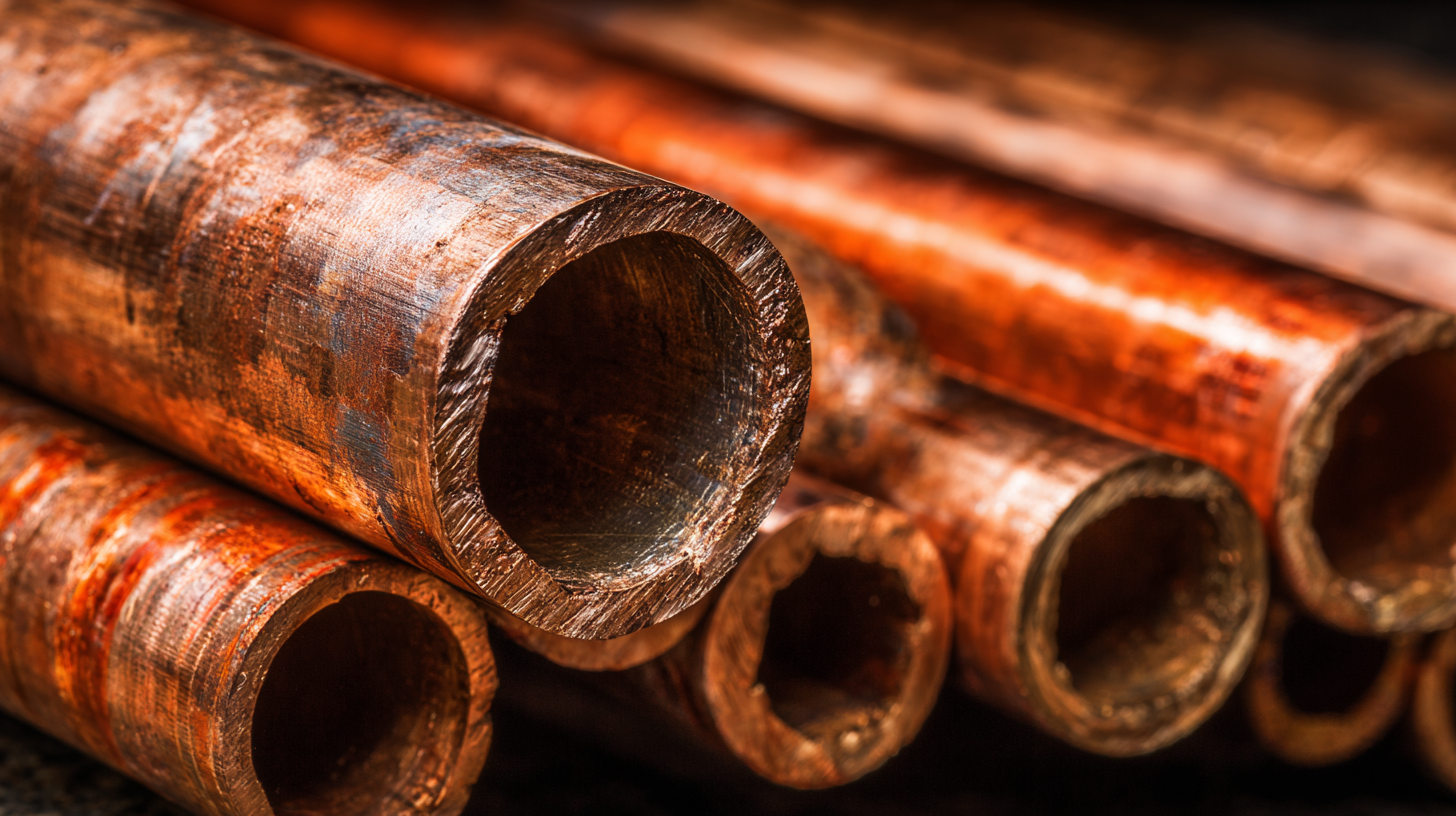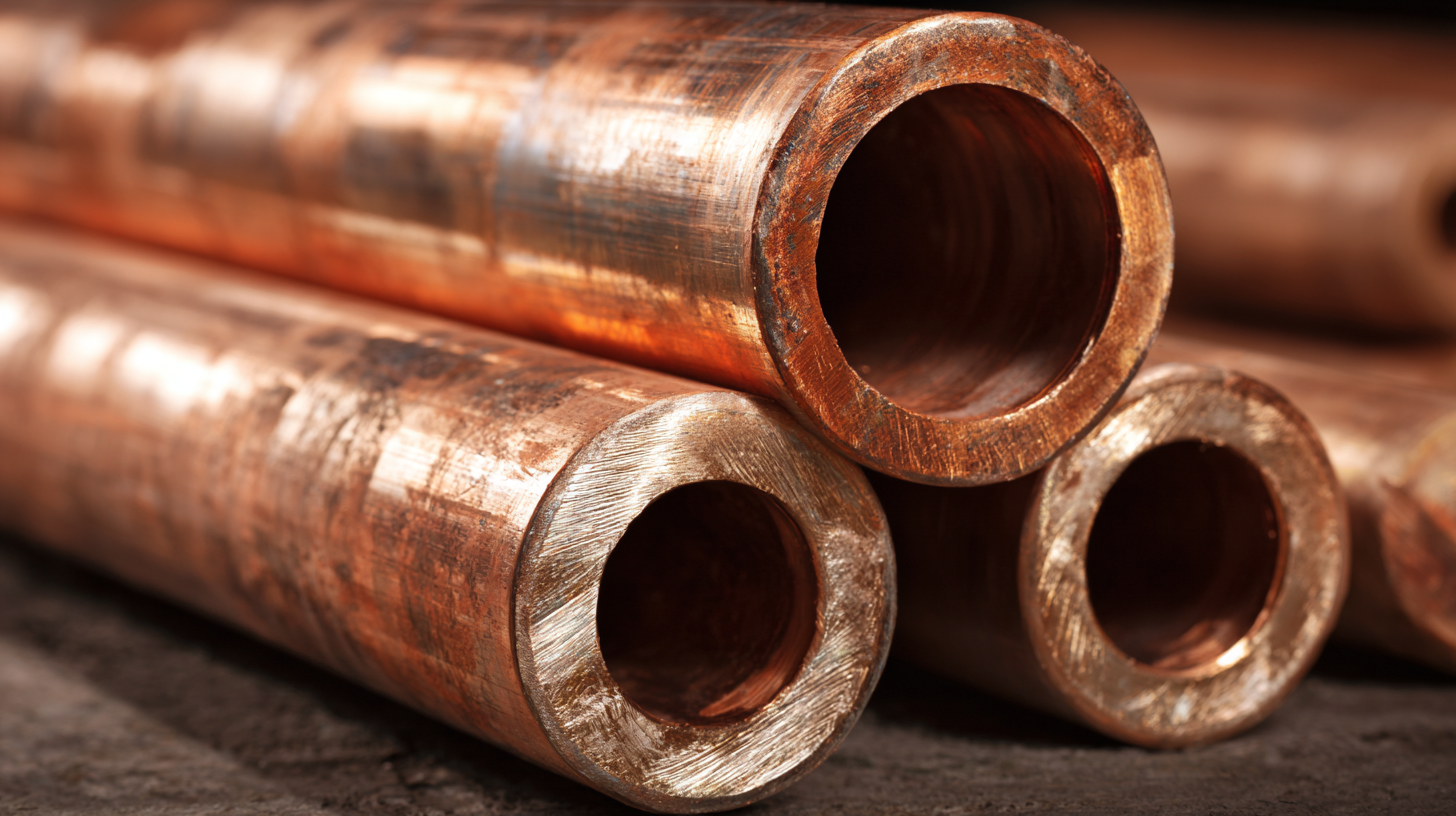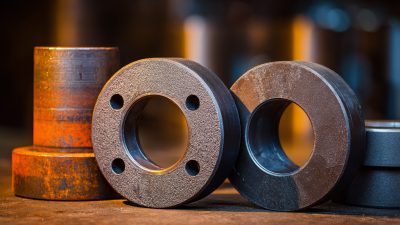The Ultimate Guide to Choosing the Right Copper Pipe for Your Project
When embarking on a plumbing or
HVAC project, selecting the appropriate materials is
crucial for ensuring long-lasting performance and reliability. Among these materials,
Copper Pipe stands out as a top choice
due to its excellent durability, resistance to corrosion, and superior thermal conductivity.
According to a report by the U.S. Geological Survey,
43% of plumbing systems in residential homes utilize
copper, highlighting its widespread acceptance and trust within the industry. Additionally,
a study by the Copper Development Association indicates that copper's
antimicrobial properties make it an ideal option for applications requiring hygiene, such as
water supply systems.
However, with various types and sizes of copper pipes available on the market, it’s essential
to understand their specific functions and benefits. This guide aims to
demystify the process of selecting the
right Copper Pipe for your project,
ensuring you make an informed and efficient choice.
Understanding Different Types of Copper Pipes: Options and Applications
When choosing the right copper pipe for your project, understanding the different types and their applications is crucial. Copper pipes generally come in three types: Type K, Type L, and Type M, each with its own thickness and use cases. Type K is the thickest and is often used for underground installations, while Type L is commonly used in residential plumbing. Type M, being the thinnest, is suitable for less demanding applications but not recommended for high-pressure situations. This knowledge allows you to select the right pipe based on the specific requirements of your project.
Tips for selecting copper pipes include considering the application. For gas piping, copper delivers reliability and sustainability, making it a preferred choice over alternatives like CSST. Furthermore, think about local building codes and insulation needs; in colder climates, ensure that your copper piping is adequately insulated to prevent freezing. Always factor in the costs associated with installation and maintenance, as these can vary significantly depending on the type of copper pipe chosen.

Key Factors to Consider When Selecting Copper Pipe for Your Project
When selecting copper pipes for your project, several key factors must be taken into consideration to ensure optimal performance and longevity. First and foremost, the type of copper tube you choose can significantly impact its resistance to corrosion and overall durability. There are various grades of copper, including Type K, L, and M, each designed for different applications, from residential plumbing to industrial use. Understanding the specific requirements of your project will help you select the right type of copper that meets your needs.
Another crucial aspect to consider is the installation environment. Copper pipes are generally robust, but they can still be susceptible to issues like galvanic corrosion when they come into contact with dissimilar metals. Additionally, environmental factors such as the presence of water contaminants can lead to pipe degradation. It's essential to assess the conditions your pipes will be exposed to and incorporate protective measures, such as proper insulation or the use of coatings, to mitigate potential risks. By carefully evaluating these factors, you can significantly enhance the reliability and efficiency of your plumbing system.
The Ultimate Guide to Choosing the Right Copper Pipe for Your Project
This bar chart illustrates the percentage of copper pipe usage across different application areas. As shown, plumbing represents the largest segment at 40%, followed by HVAC at 25%, and other areas such as industrial, electrical, and architecture making up the remaining percentage.
Essential Tools and Techniques for Working with Copper Pipes
When working with copper pipes, having the right tools and techniques is essential for success. According to the Copper Development Association, copper accounts for over 65% of the plumbing materials used in residential construction. This prevalence underscores the need for homeowners and professionals alike to equip themselves with the correct tools to ensure efficient and effective installations. Key tools include pipe cutters, deburrers, and soldering kits, which are crucial for achieving clean cuts and leak-proof joints.
In addition to tools, understanding the proper techniques for working with copper pipes can significantly impact the quality of your project. A report by the National Association of Home Builders indicated that improper soldering techniques are among the top causes of plumbing failures, resulting in costly repairs. To avoid these pitfalls, it's important to clean the joints thoroughly, apply the right flux, and use a controlled heat source to prevent overheating. Mastering these techniques will not only enhance the durability of your plumbing system but also increase the safety of your operation, ensuring peace of mind for both you and your clients.
Common Mistakes to Avoid When Choosing Copper Pipe
When selecting copper pipe for a plumbing or HVAC project, avoiding common mistakes can save both time and money. One prevalent error is not considering the specific type of copper pipe needed for the application. There are three main types: Type K, Type L, and Type M, which vary in wall thickness and are suited for different uses. According to a report from the Copper Development Association, Type K is typically used for underground applications due to its thicker walls, while Type L is preferred for interior plumbing installations. Neglecting to choose the appropriate type can result in costly leaks or system failures.
Another frequent mistake is overlooking the importance of proper sizing. Many contractors underestimate or overestimate the required pipe diameter, which can lead to inefficiencies. The American Society of Plumbing Engineers emphasizes that proper sizing is crucial for maintaining optimal water flow and pressure. Pipes that are too small can restrict flow, causing pressure drops, while overly large pipes might lead to increased water chilling and stagnation. Understanding the hydraulic calculations and adhering to industry standards is vital for ensuring the project’s success.

Tips for Maintaining and Ensuring Longevity of Copper Plumbing Systems
Copper plumbing systems are known for their durability and resistance to corrosion, making them a popular choice in various construction projects. However, to ensure their longevity, proper maintenance is crucial.
Regular inspections can help spot signs of wear or leakage early, allowing for timely repairs. It’s advisable to check for any damp spots or unusual water discoloration, as these can indicate underlying issues that may compromise the integrity of the copper pipes.
Additionally, flushing your system periodically helps prevent the buildup of debris and mineral deposits that can reduce water flow and affect overall efficiency. When engaging in maintenance, always prioritize using non-corrosive cleaning agents to protect the copper from unnecessary damage. Moreover, insulating exposed pipes prevents freeze damage in colder climates, ensuring your plumbing remains functional year-round.
Looking ahead to 2025, countries rich in copper reserves are strategically positioned to influence global agriculture, energy, and defense. Sustainable mining practices not only help preserve environmental integrity but also ensure a steady supply of copper for innovative technologies that rely on this vital metal. As industries evolve, the interplay between copper resources and sustainable development will continue to shape our world.

Home
About Us
Products
Carbon & Carbon Alloy Steel
Stainless Steel
Copper & Nickel Alloy
Heat Efficiency Tubes
Pipe Fittings
Pipe Flanges
Gasket, Stud Bolt &Nut
Industrial Valves
Tech & Service
Blog
Contact Us





